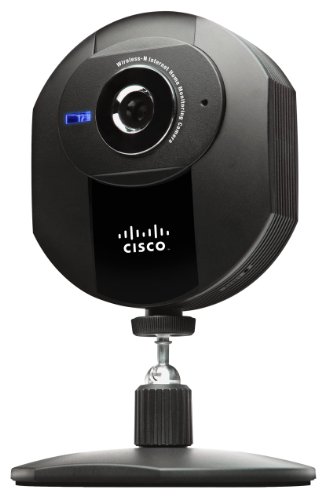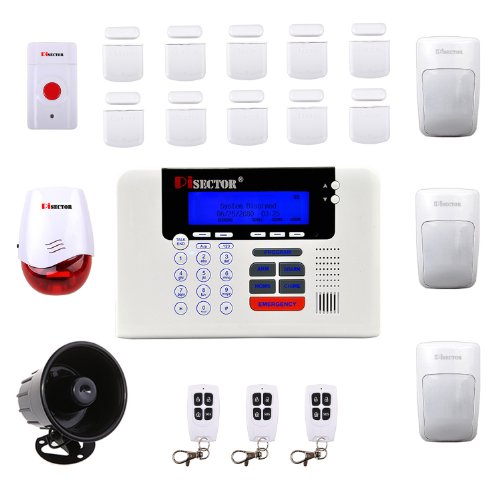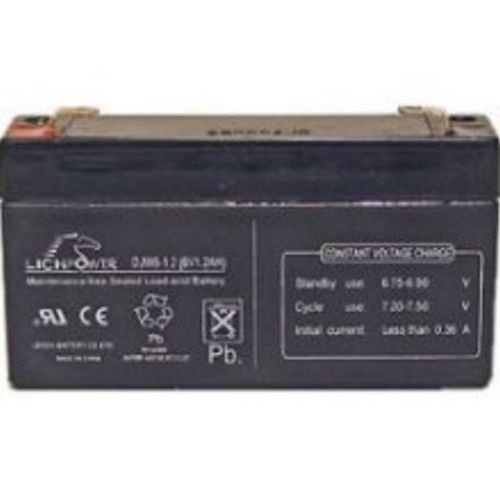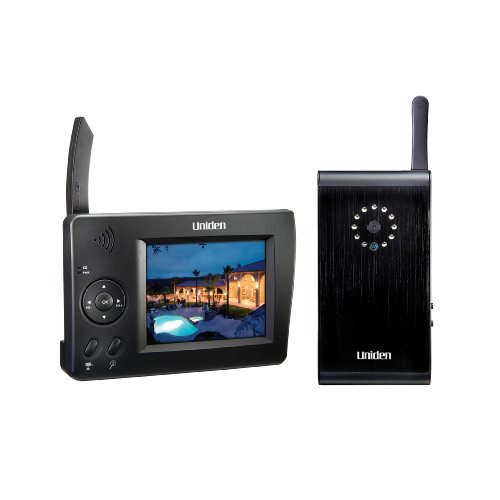
Send live audio and video to a smartphone or web browser anywhere in the world! The Cisco-Linksys wireless-N internet home monitoring camera connects to your network wirelessly, and delivers a live audio/video stream to a smartphone or browser anywhere. Also captures video streams and sends email alerts with video clips upon motion detection.
Cisco-Linksys Wireless-N Internet Home Monitoring Camera
Posted on by admin

You May Also Like
More From Author
Intro to Cold Frame Gardening for Winter
November 21, 2024
Nerf Elite HYPERFIRE Blaster | Nerf Gun Review & Unboxing in 4K!
November 21, 2024
3Comments
Add yoursComments are closed.



















Re: the lower ratings… I don’t know what the problems were, but…,
Here’s the scoop: I was rather concerned about reading the wide range of ratings on this camera, seeing that there were some one star reviews coming in, so I was fully ready to return this puppy if it didn’t live up to my pretty high standards.
That said, here is my experience:
I have a Linksys Dual Band Wireless N Router running in a single level ranch about 50 yards from some pretty serious power lines. On the network is a Power Mac connected via ethernet cable, and 3 laptops (a PC, an older Macbook, and a newer Macbook Pro) via wireless. Off topic, I’m not impressed with the range on the Linksys Router, but it provides some pretty quick bandwidth in the home with two networks to connect into, so I live with it.
I unboxed the WVC80N, which came with an ethernet cable, a CD, and some instructions/manual. I followed the instructions to the letter, which instructed me to put the CD into a computer first. I put it in the Power Mac. The CD worked fine and opened up a set-up guide. The set-up guide told me what to do… it detected the wireless devices on the network, then told me to plug the ethernet cable into the camera… I clicked ‘next’, then into the router… ‘next’, then plug the power in on the camera… ‘next’, and turn it on… ‘next’… it detected the camera via the ethernet cable with no issues, and continued to lead me through the set-up… I had to create user name and password for the camera, etc., then something awesome happened. I used to be pretty technical, but now don’t like to mess with having to figure out how to make something work… I just like it to work. So to my pleasant surprise, when I clicked ‘next’ this time, ALL THE ADVANCED SETTINGS that allow the camera to be seen via the internet (through secure login and password) were done AUTOMATICALLY for me while I watched. No port mapping. No WPA set-up. No hassles! Awesome!
Then it led me to the TZO set-up (free for 90 days) for the service to be able to look at the camera from anywhere on the Internet any time you want. To explain the technical side of this to non tech folks: If you have a normal DSL or cable internet service, you get what’s called a “dynamic IP address” assigned to you from your cable company. This IP address is a number that allows other computers to be able to find your computer whenever you ask to see something (like pulling down video from […] or getting search results from google – it’s a “send the video to this address” kind of thing). But a dynamic IP address can change every time the power goes out or your modem reboots. The internet provider just gives you another one from the ones they have laying around. So where your IP address at your house might have been 123.456.789.123 yesterday, it could be 123.456.789.456 today. So when you are out on the Internet looking to view your camera, you need to know what your IP address is for your house at that particular time. Enter TZO. TZO is an IP mapping service that has your camera send out a message to them saying “here I am”. Then TZO writes down that IP address (automatically) for that day and gives you an address at their site to log into ([…]), which then forwards you to your house and your camera. The service costs $25 a year, or discounted for multiple years. NOTE: You don’t have to have this service if you have a static IP address or can figure out your dynamic IP address without this service.
So I set up a TZO domain (and will probably pay the $25, because we got it to show the family what’s going on in the nursery for a new baby… and it’s a simple web address for the grandparents can bookmark. FYI, the camera allows you to set-up user accounts and passwords for different users.), and here’s where another magical thing happened. I clicked on “show video”… and it just worked. FROM THE INTERNET ADDRESS… IT JUST WORKED. Amazing. So now I started to play with and test to see what the limitations of this device are:
First, we had two family members log on simultaneously to see frame rate response. It worked at almost 30fps for three simultaneous users at maximum resolution of 640×480. Cool. So let’s play with the settings:
The camera is a smart device, and if you’ve ever seen your Router’s set-up menus after logging into your wireless router… there’s the same type of interface here inside the camera. You can change basic settings like dynamic or specific IP address, tell it whether or not to turn the power LED on/off on the front of the camera, etc…. you can change image settings, to large, med, or small resolution, set frame rate, etc… you can add or delete login accounts and passwords (add: grandma password: grandchild for grandma to use when she clicks on your camera’s web address), and you can change the settings for automatic motion detection, automatic timed recording, etc. The camera will send you an email with still images or…
Read more
Was this review helpful to you?

|Good but not without flaws,
Linksys WVC80N cam review:
Positives:
Supports 640×480 resolution at up to 30FPS. Don’t buy an ip cam that doesn’t support 640×480 (i.e. some of the Panasonic ones)
The low light level performance is good. This cam claims to have a better CMOS sensor that the previous model but it’s still not all that great in low light (if you want good images in low light you need an IP cam with a CCD sensor but this adds cost and complexity). This is not a Day/Night cam that has infrared LEDs that provide illumination in completely dark areas. (You need to have some level of lighting, and the more the better). Still, I think it’s better in low light that some other IP cams.
Cam supports wired Ethernet AND 802.11n (Draft) WiFi. 802.11n is better for supporting multiple cameras (but see negative below).
Works very well with (3rd party) BlueIris software
The camera can time stamp the video with the current time/date. It can also display any text on the video (such as location etc) that you enter)
The user manual PDF is very well written and goes into technical details that other manufacturers leave out (such as CGI commands to control the camera without using the web interface).
Very reliable, especially with a wired connection. I run these 24/7 without having to periodically reset cams, which is a problem that seems to plague other IP cams.
Unlike some other cams this one has an integrated infrared lens filter, which means that outdoor images will have correct colors.
The status page indicates the current interface in use (WiFi or Ethernet). Some other cams do not indicate what the current interface is, and this is useful info for troubleshooting/diagnostics.
Negatives:
There does not seem to be a way to manually focus the camera lens. If you have stuff going on more than a few feet away you will not see details!
The power adapter cord is way too short! The cord SHOULD be at least 10-12 feet long. I never understand why manufacturers always give you a short cord – do they feel that you always have a power outlet where you want to place a cam?
I don’t like the mounting bracket. Two screws (NOT INCLUDED – why?!) must first be screwed into the mounting surface and the mounting bracket slides into the screws and held by friction or gravity (depending on mounting position). This is in contrast to other cam mounts which must be screwed down and are unremovable without tools (this one isn’t). In addition it is too easy for anyone to move the cam’s position by hand. Also the mount makes the cam stand out more (more noticeable). There should be a cardboard template included to make it easier to drill the mounting holes for the screws (they must be spaced apart correctly otherwise the bracket will not fit). Also the design of the mount makes it impossible for the cam to mount against a vertical surface (side of bookshelf) and show a straight level display, because the side of the cam bumps into the base of the mount.
This cam is labeled as using draft 802.11n technology and features 1 internal antenna (according to the datasheet). For maximum range and speed 802.11n uses MIMO which requires multiple antennas. This may explain why the range may not be as good as it could be.
The cam’s web interface should feature a WiFi scan feature which also displays all detected SSIDs, channel # and {660353129f8d892044c993645a1c75194301fec6786a7f617c15adde0b0011e9} signal level (so you can get an idea of signal strength and channels in use by other routers). Trendnet WiFi IP cams have this feature and it’s a VERY useful one. It’s disappointing that other manufacturers don’t include this feature.
The image options web page allows brightness/sharpness to be set, but it doesn’t display the image at the same time so you can observe changes.
The webpage “Live Video” displays video only using MJPEG, not MPEG. Other cameras (such as Trendnet) allow selection of video type. This does not mean that the camera only supports MJPEG but that’s all you can get via the default webpage).
Comments on other reviewer’s problems:
“Range problems” – WiFi connections are tricky things, in that there are many factors to consider. Interference from other routers, distance/positioning of both router/cams, router firmware, cam firmware, MIMO capabilities of both, type of walls between router & cam etc. The only constant to reliable working WiFi is experimentation – sometimes another router or cam will work better in a given situation. Wired Ethernet gives the most reliable results but isn’t always convenient. If the web interface displayed signal levels it would be easier to troubleshoot wireless problems. Also this camera should have 2 antennas for MIMO support.
Overall I think this is a decent camera for the price (less than one one five). However many improvements that I’ve listed can be made via firmware so hopefully this camera will be improved. And how about a True 802.11n MIMO version of this camera?
OCT2011…
Read more
Was this review helpful to you?

|Linksys WVC80N is a great camera!,
We’ve been using the WVC80N camera for a while on our home network with a Linksys WRT350N router. The WVC80N is the next generation IP camera from Linksys. It’s older similar looking twin the WVC54GCA is good but had some issues that the WVC80N solves. You can see reviews of the WVC54GCA cam at myhomeserver.
The WVC80N adds Wireless N, an easier setup for Remote Viewing and best of all, direct writing to a NAS drive to record video! This means you don’t have to keep a computer running, simply setup a shared folder on your NAS/Network drive and then add in the path,username and password into the camera and that’s it! It will instantly start recording a AVI file to the drive directly that you can play in Windows Media player, etc.
Remote access is also better since it is now included as an option in the CD wizard. When you setup the camera, it asks if you want to remotely view the camera. Selecting YES will setup a custom domain name […] and then the wizard will set a static IP on the camera and setup the DDNS at TZO and set it up in the camera. All of this is done behind the scenes and it does all of the port forwarding and port selection automatically. This is a big advancement in camera setups..its actually easy
Great camera, I give it a thumbs up
Was this review helpful to you?

|